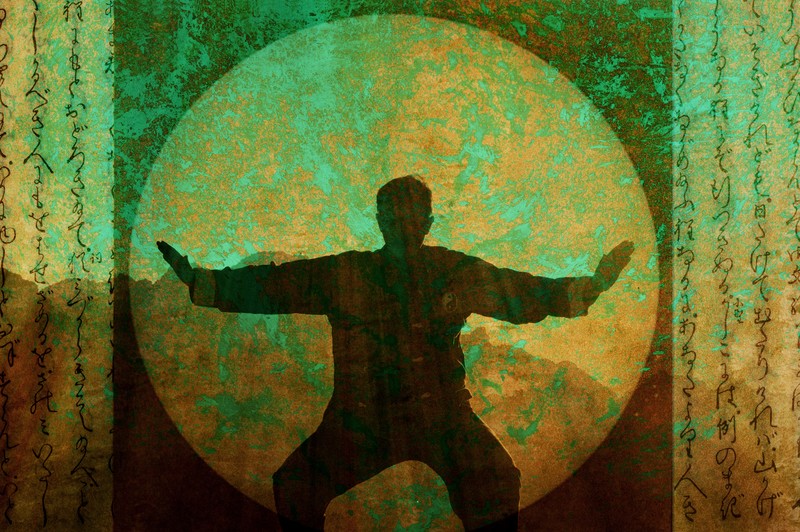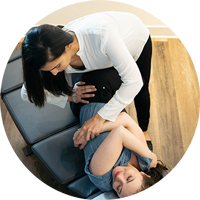This article was published in the latest issue of the Illinois Acupuncturist.
Applying Qi Gong and Tai Chi in the Acupuncture Clinic
Most acupuncturists would agree that qigong is an important part of Chinese medicine. At some point in our education and training most of us took at least an introductory class or seminar on qigong and possibly even tai chi. For many of us, these intro classes may have been the extent of our study while others may have delved deeply into the practices. Whichever the case may be, as acupuncturists, we are fortunate to have these powerful practices in our repertoire and we should be applying them clinically. Unfortunately, clinical use of qigong and tai chi within our clinics seems to be the exception not the norm. It’s possible that, even as acupuncturists, we have somewhat of a misunderstanding of qigong and how it can be applied within our clinics. Maybe we are overthinking it! We should consider qigong and tai chi to be the Chinese medicine version of physical therapy.
Allopathic medicine and chiropractic medicine have recognized the importance of physical medicine, therapeutic exercise, and neuromuscular re-education. Physical therapy is described as a form of medicine that uses mechanical force and movement to reduce pain, increase range of motion and stability, remediate impairments, and improve quality of life and health. Can we do this with qigong and tai chi? Chiropractors and physical therapists include range of motion testing and physical assessment to assess, diagnose and make medical prognosis. Can we also do this with qigong and tai chi? We know that qigong and tai chi both involve movement and breathing. Now let’s consider what we know to be a few of the main health benefits of tai chi and qi gong. From a Chinese medicine perspective, they benefit qi and blood flow, strengthen and relax sinews, and calm the spirit. In western terms they promote circulation, reduce pain, strengthen and also relax muscles to promote stability and movement, improve breathing, and reduce anxiety. When we consider what we know to be the health benefits of tai chi and qigong along with the fact that they are both forms of movement combined with breathing it’s not so much of a stretch to see that we should be considering these to be our versions of physical therapy and exercise medicine. Many western hospitals have even incorporated tai chi into their rehabilitation programs because of the ample evidence of its health benefits!
Physical therapy and rehab medicine have grown into a multi billion-dollar industry and will continue to grow. This is no coincidence as scientific evidence has proven exercise medicine to be just as, if not more, effective than many other types of interventions including surgery and pain medications. In my practice, I always remind my patients of the importance of exercise therapy and physical activity in addition to any passive therapy they are receiving. I like to think of receiving treatment and also doing some form of therapeutic exercise as a perfect example of yin/yang balance when it comes to therapy. If you think about it, yes, acupuncture and Chinese herbs promote blood circulation and internal organ function but the simple acts of breathing and moving do that as well. Essentially qigong and tai chi are both acts of controlled movement and breathing, but those of us who have studied Chinese medicine know that the benefits are far deeper. Qigong can function on a deeper level than other forms of exercise medicine because of the focus on breathing, mindfulness, and intention combined with movement. One example I commonly use to illustrate this point is when treating patients suffering from headaches, neck pain, cervical spine pain, and cervicobrachial pain. The musculature in these regions is commonly tense and spasmodic due to stress and inefficient breathing. Using qigong practices and fundamentals borrowed from tai chi, I like to remind patients to breathe slowly and mindfully deep into their lungs while maintaining relaxed accessory breathing musculature. Over time, this simple practice can alter the patient’s breathing and postural habits, leading to pain relief. What is important to note here is that the breathing techniques and postural adjustments are very basic and not in-depth, esoteric qigong practices. For those of us who are fans of tai chi and qigong, we know that the practices are much deeper than the example I just presented but we have to remember that for those who have never studied this medicine, a simple breathing technique can be a tremendous first step.
As our acupuncture and Chinese medicine profession grows, I encourage everyone to embrace simple qigong and tai chi practices so that someday we can further promote our own unique form of physical therapy.
____________________________________________________________________________
Demetrios Bobolos is a licensed acupuncturist at Aligned Modern Health in Chicago, Illinois.








